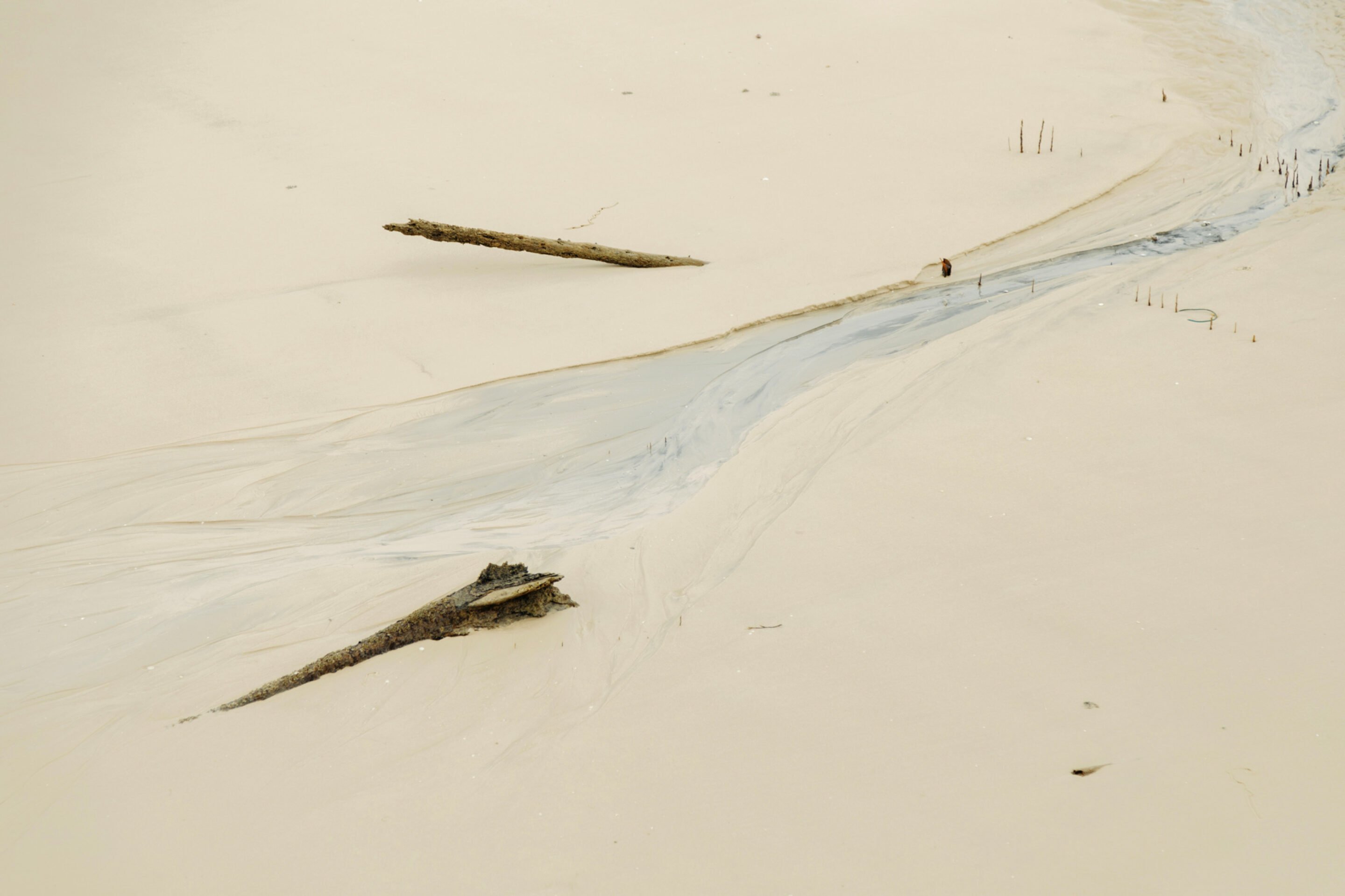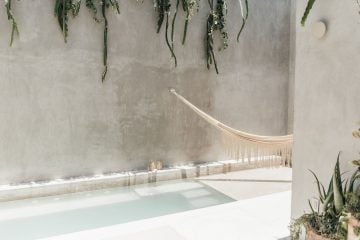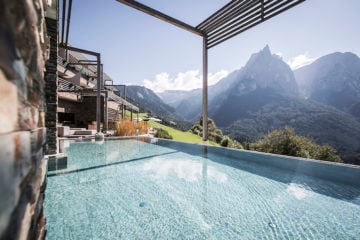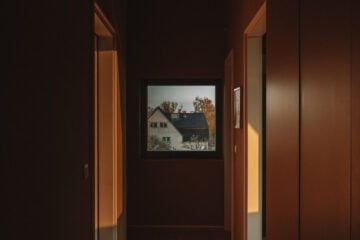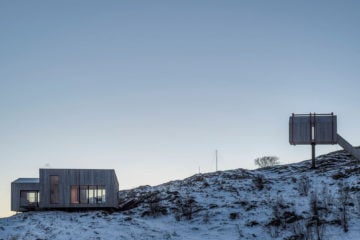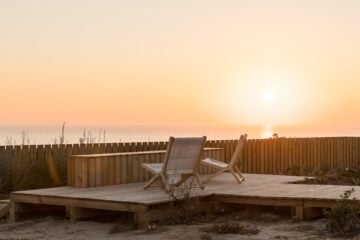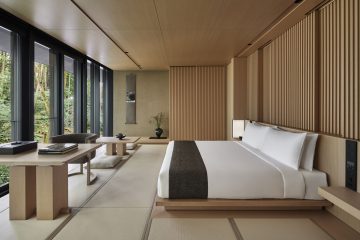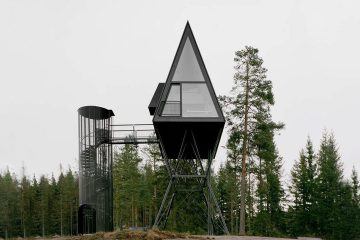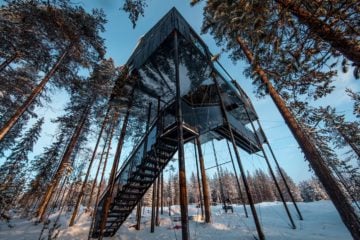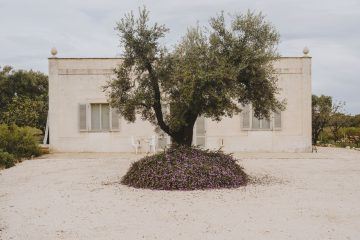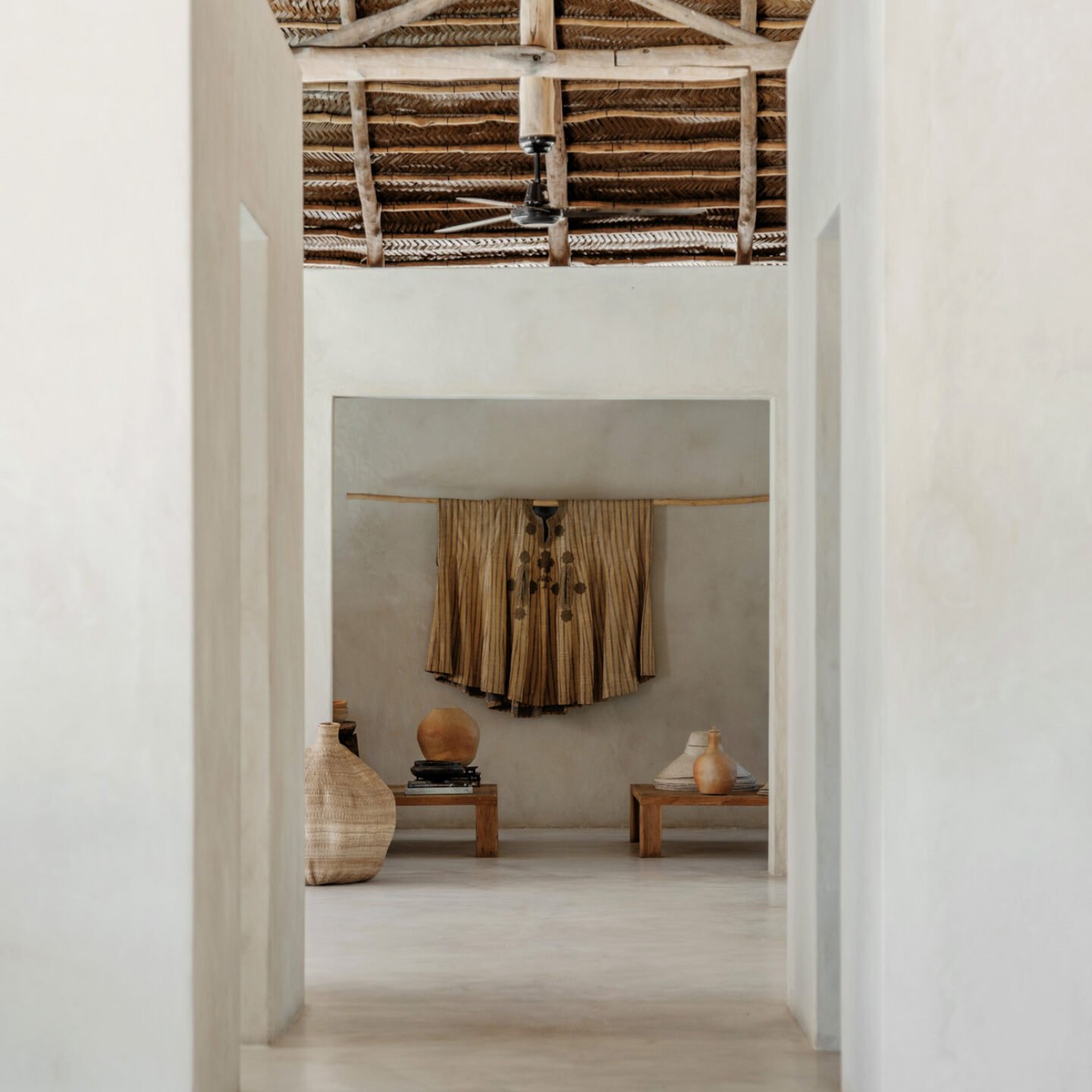
In Celebration of African Craft, Sussurro Brings A New Consciousness to Travel
- Name
- Sussurro
- Images
- Edvinas Bruzas
- Words
- Anna Dorothea Ker
Frothy waves lazily lap powder-white sand. Overhead, palm fronds filter a soft breeze. The curved sail of traditional dhow boat carves a striking silhouette against a sky smudged pastel pink. A sanguine moon hangs plump above the shimmering sea. Perched on a sliver of land between ocean and lagoon in Mozambique’s Bazaruto Archipelago, paradisical Sussurro appears as a mirage; a rare destination deserving of superlatives. Taking its name from the Portuguese word for ‘whisper’, the off-grid, eco-inclined, six-bungalow hotel opened in 2022 after five years of building that began with its founders, Zimbabwean couple Sarah Birkett and Adam Humphreys, integrating into the local community. Realized exclusively by African designers, builders and growers, Sussurro celebrates craft, ingenuity and creation across Mozambique, East Africa and the continent at large. Every element of its considered guest experience exemplifies the potential of privileging locality, time, and genuine human connection. In conversation with Ignant, Sarah Birkett shares how her idyll found its form.
Sussurro was born from an aspiration to engage a conscious narrative in African travel. What are some of the unconscious misconceptions about African travel that need rewriting?
I feel passionately about not perpetuating this kind of colonial idea of traveling in Africa. While we’re in the domain of “luxury” travel, it’s about being more aware. That’s our main aim with Sussurro—having more of a consciousness about what you’re providing and where you’re based. It’s less about “more is more”. Instead of just delight on the absolute beauty of Africa, of African nature, of the space and the people and the food we have here, there’s still this mentality of laying it on when guests arrive with everything you can imagine under the sun. For example, most of the remote African lodges will offer a cheese burger, despite often not being anywhere near cattle. We don’t believe that an educated traveler is interested in that anymore. We’ve been ground-breaking in how we’ve gone about things and have already felt reverberations in the industry, which is great because that’s exactly what we came to do—shake it up.
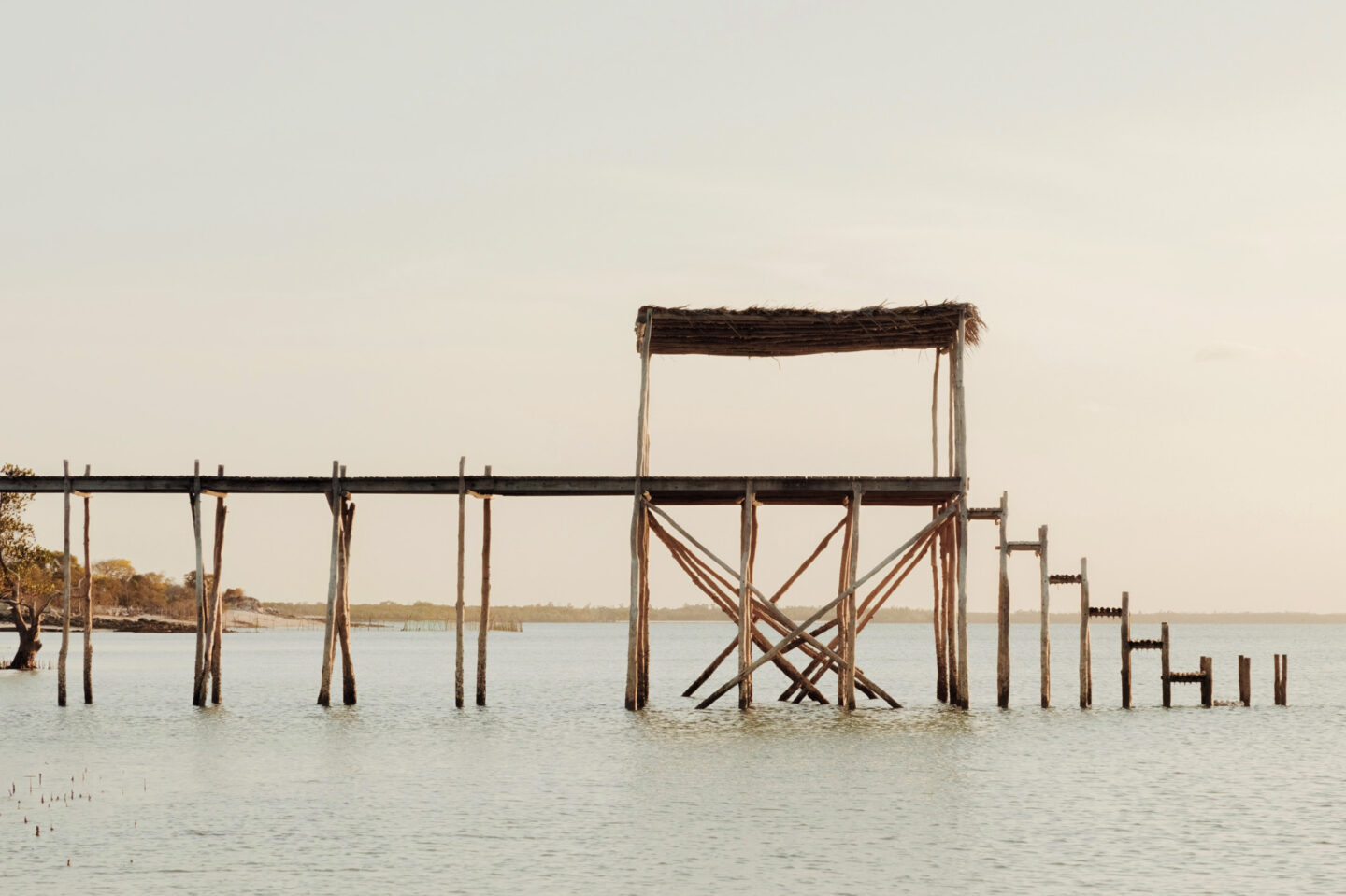
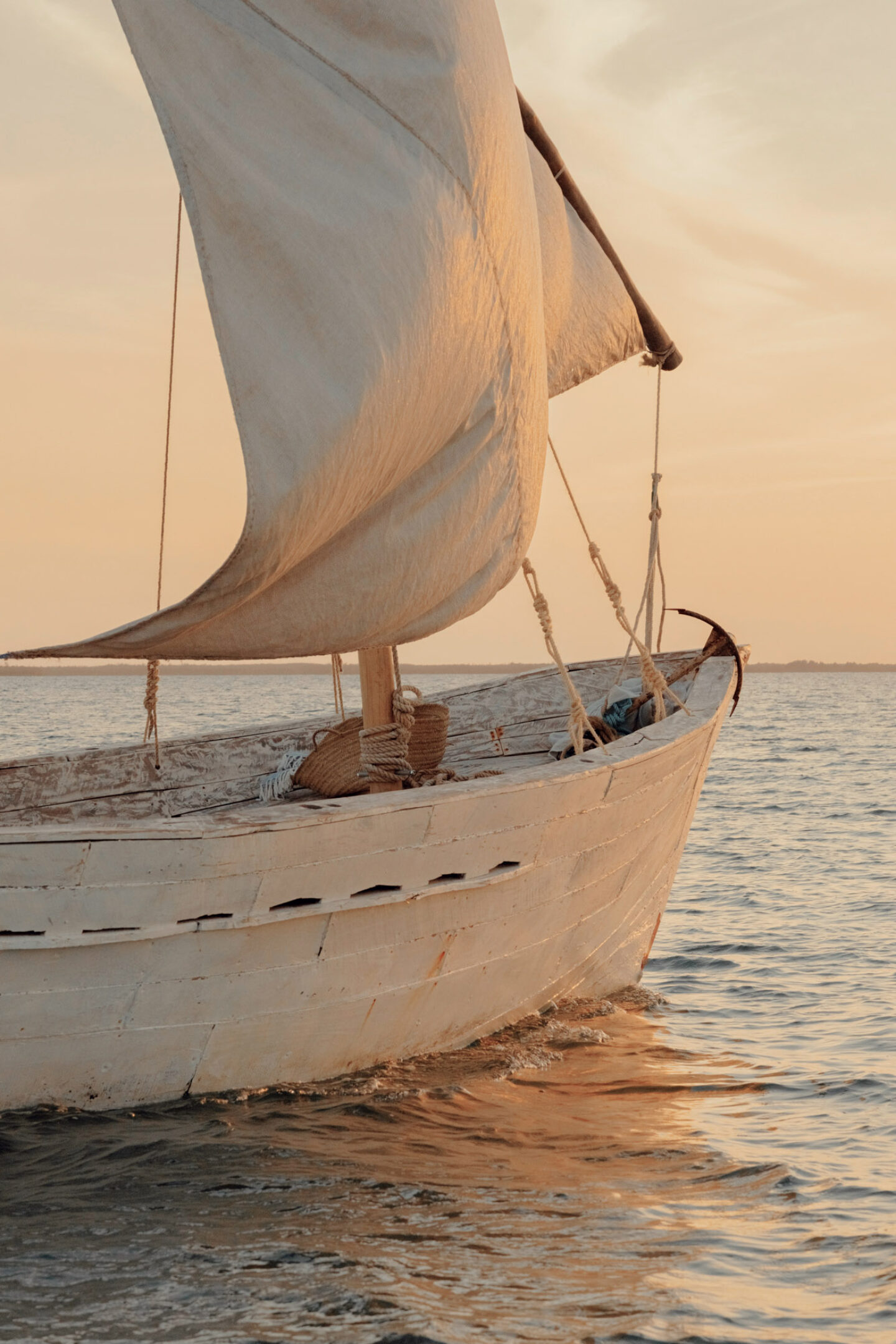
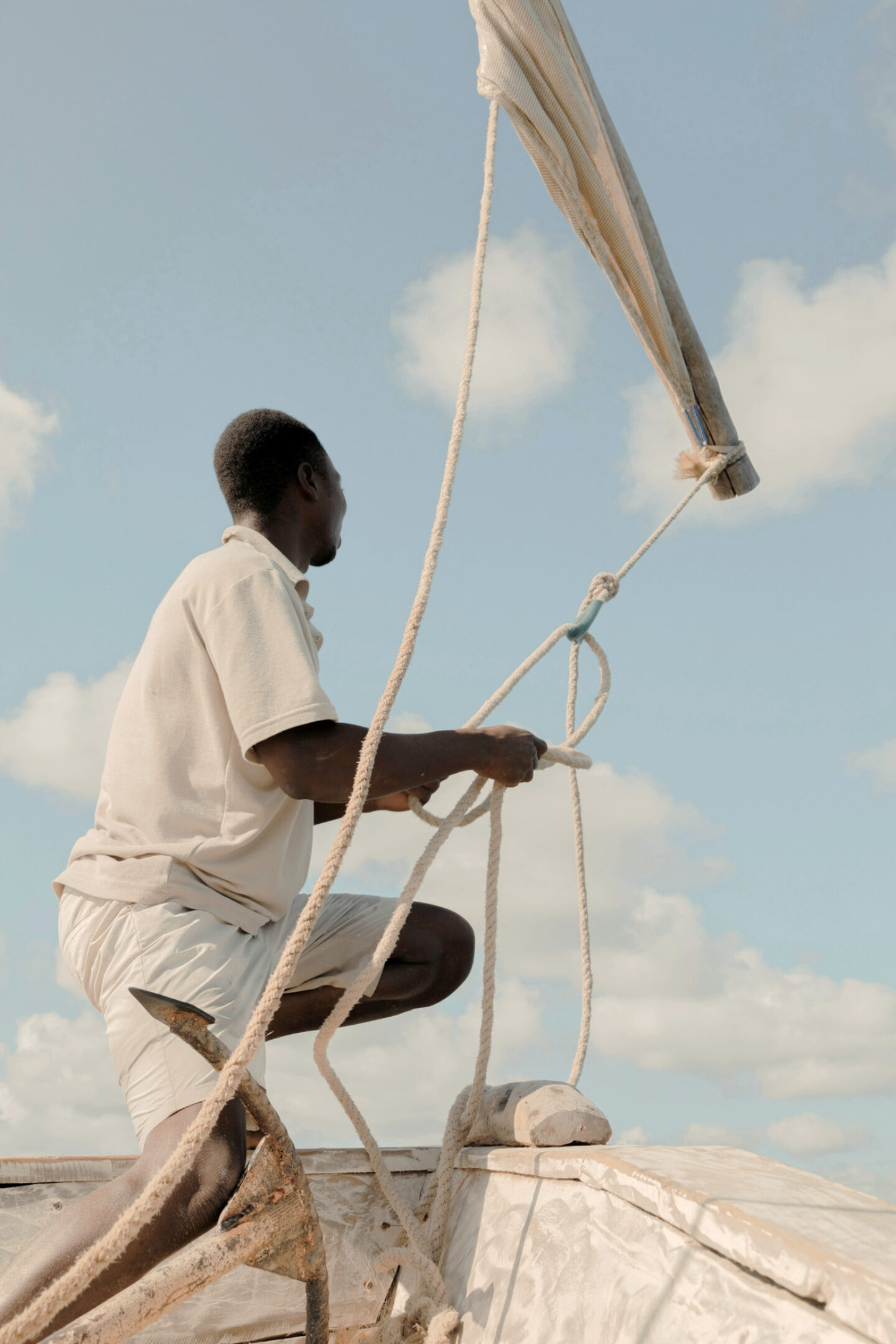
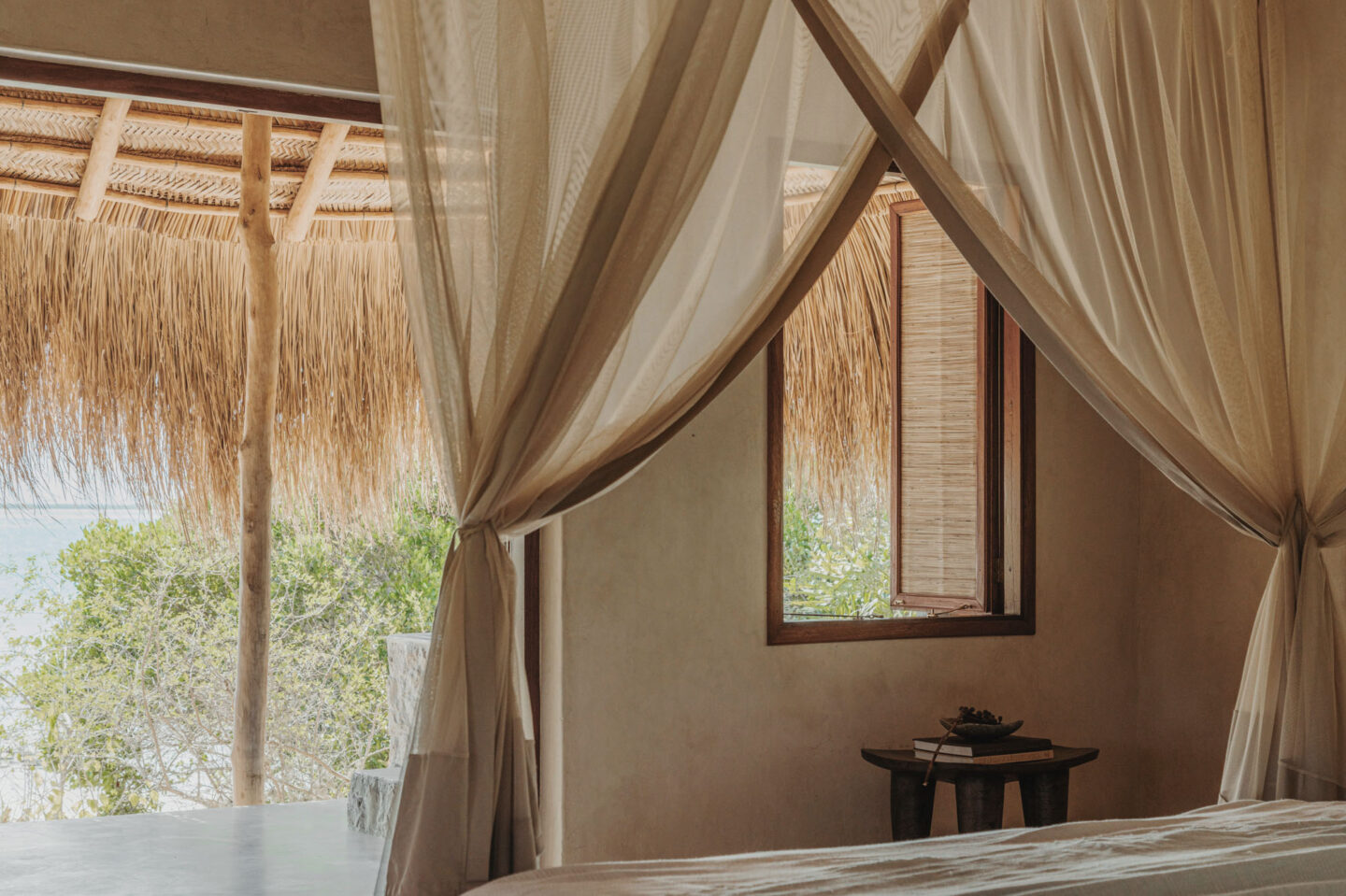
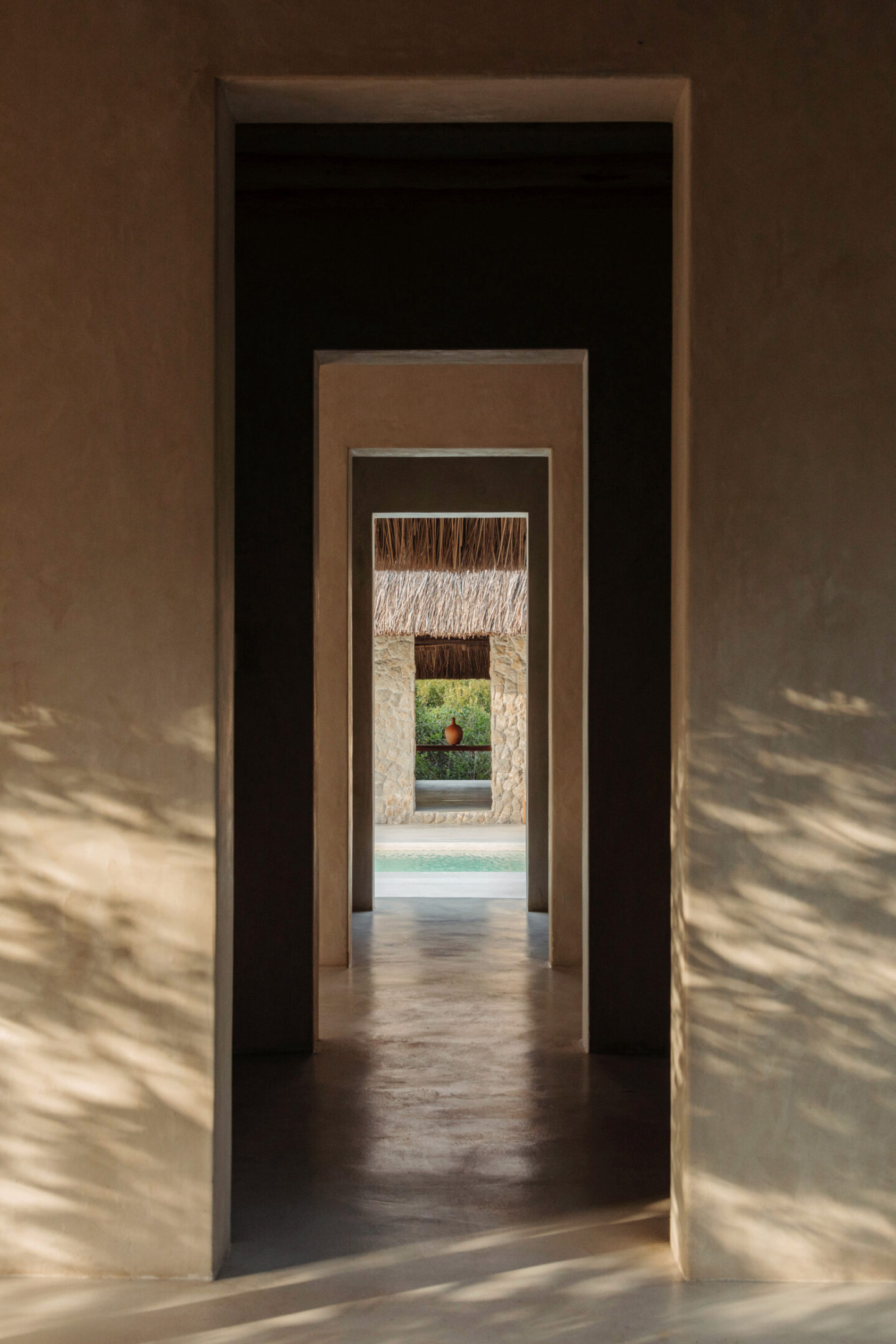
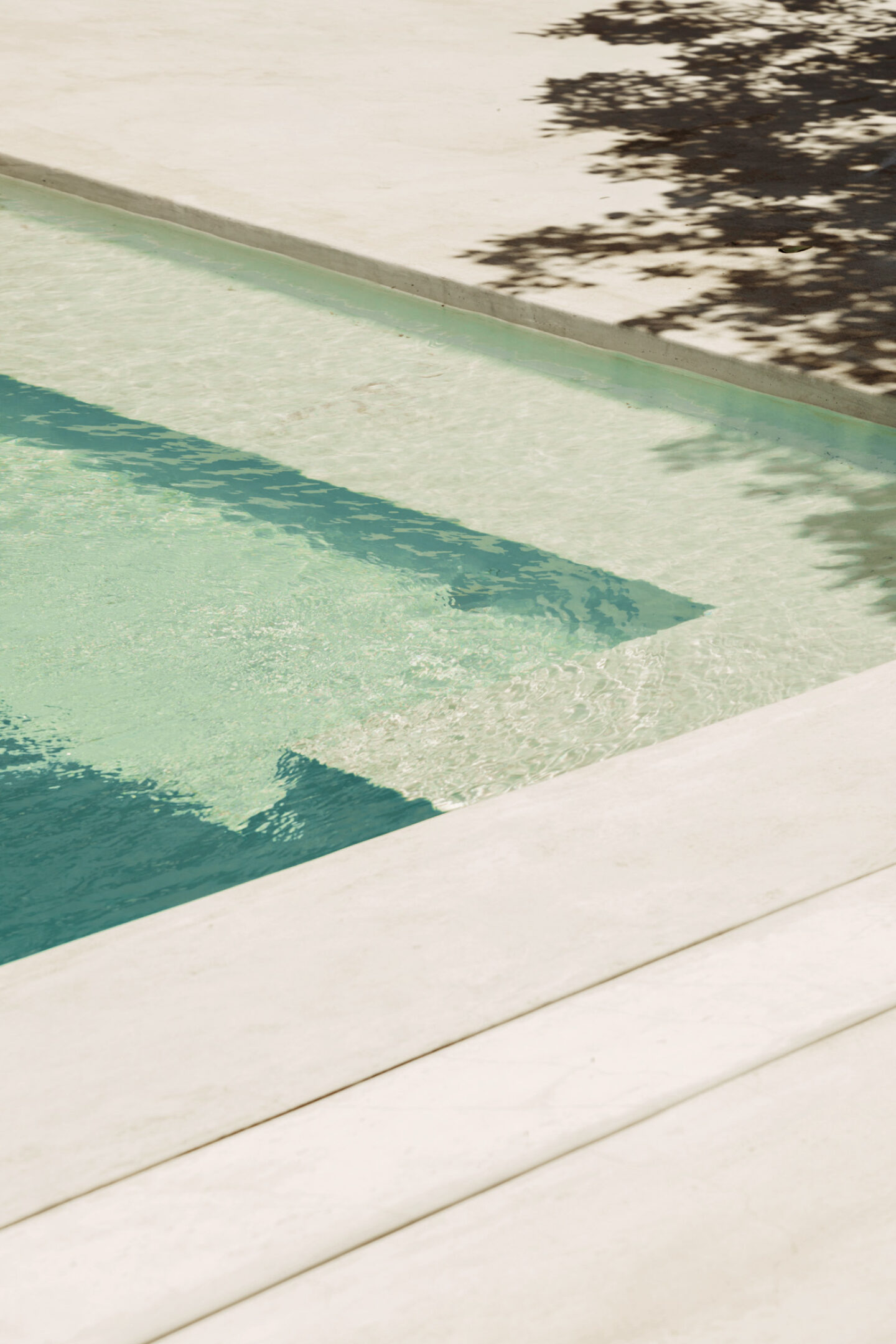
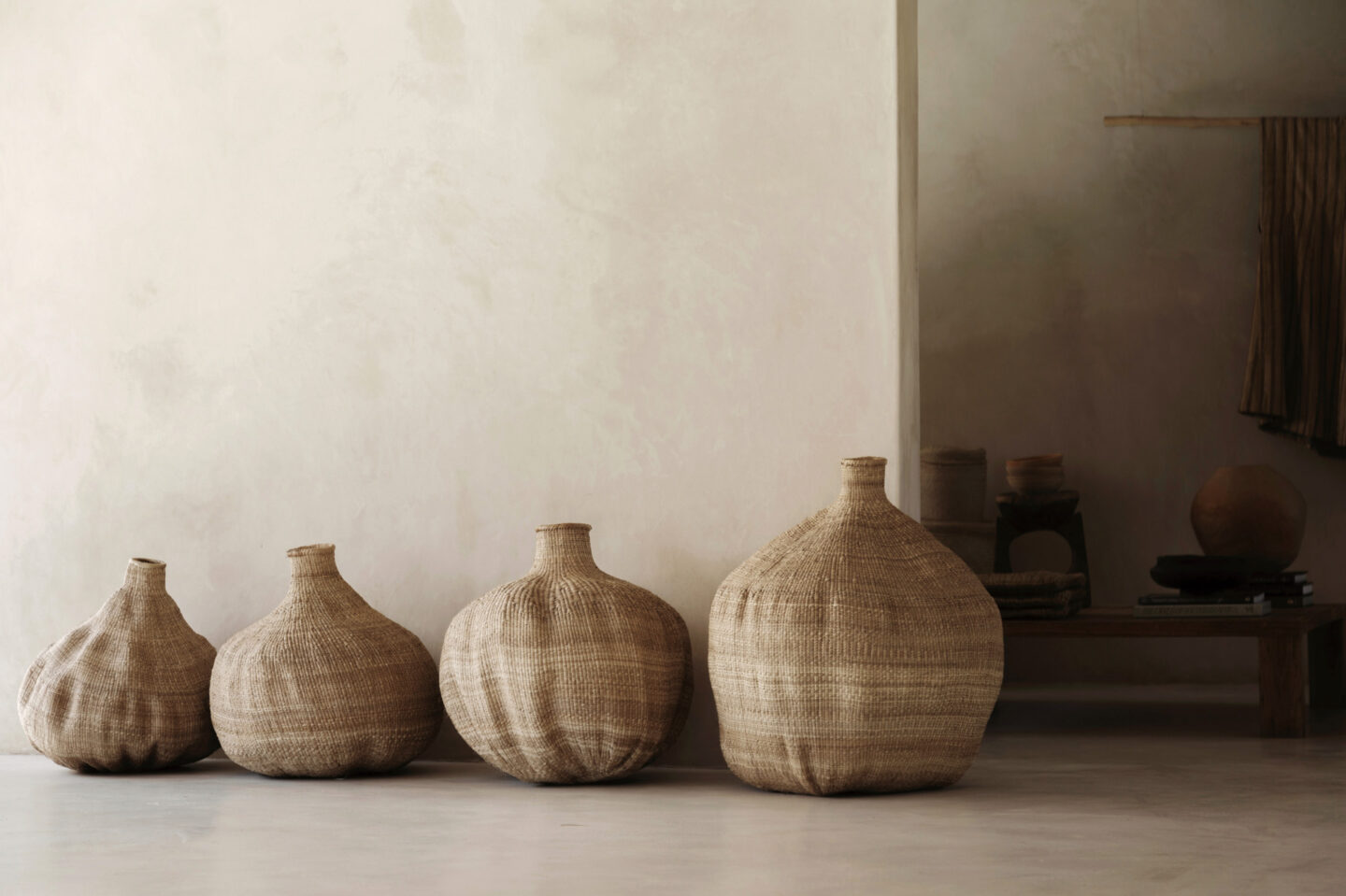
"We both knew what we were searching for when we left Zimbabwe, but in the back of our minds, we were always thinking, 'What can we bring back?'”
Sussurro emerged from a labor of love between yourself and your partner, Adam. Could you share a bit about your respective backgrounds and how you came to realize Sussurro together?
My husband Adam [Humphreys] and I were both born in Zimbabwe. We each left in our late teens, not knowing each other then. I went to London and worked in fashion for a good few years, also in Asia, America and Europe before returning to London to study art direction at the University of the Arts. Meanwhile, Adam lived in Italy for many years, where he converted an old convent into a villa and became immersed in Italian cuisine. We both knew what we were searching for when we left Zimbabwe, but in the back of our minds, we were always thinking, “What can we bring back?” By the time I was living in Europe, I wasn’t sure that I was going to come back. But I fell in love with Adam while returning. At the time, I was writing for Suitcase Magazine, and had said to my colleagues, “I’m going back home, so let me do a guide to Harare.” One of the places that I was including in the guide was a wildlife sanctuary on the outskirts of the city. There were orphaned elephants on site, which Adam was looking after alongside overseeing the hospitality side of things, so I had to get in touch with him to cover it.
We fell in love, and over time we asked ourselves how we could bring our two backgrounds together—his in hospitality and conservation, and mine in design and craft. A lot of my studies and work had been about African self-conception, in particular the transferal of material culture through objects and craft like weaving and carving in the Sub-Saharan area. We looked at Zimbabwe at first, thinking, “There are far too many of these destinations that people are going to without getting a real sense of place.” Too many camps are still filled with colonial relics like butler trays and old maps of the continent peppered with pre-independence name sakes. It hasn’t really been thought through, or maybe it has been thought through but if so, it’s still in this arrogant, colonial mindset that you’re not going to consider the fact that the items you’ve chosen—because there’s always a choice—for your guests are speaking from a time that no longer exists; isn’t at all influenced by the local culture or allowed even the consideration of a local lens.
Adam and I both used to travel to Mozambique a lot when we were younger. It’s the closest ocean to us in landlocked Zimbabwe. And Adam’s dad actually had a little lock-up and go, a kaniso reed hut on this piece of land out here on the peninsula. It was coming to a point where he needed to make a decision on its future. He asked us what we thought of it. Adam said it was a really special place to him and we were definitely more drawn to the idea of developing something removed from the sphere of high tourism so we packed up our vehicle and drove out here. The first night we arrived at the hut, it was pitch black because there wasn’t any electricity. The hut was entirely made of reeds except for the concrete floor and mosquito-net covered windows. I stepped out onto the beach and went into the water. It was high tide, and super warm. There was phosphorescence. Then the stars… The next morning, we woke up and I just saw this milky blue turquoise lagoon and sand ahead of us, with fishermen hacking across the lagoon in their dugout boats, which are these beautiful local canoes carved from a single piece of wood, and then seabound dhows [traditional lateen rigged Mozambican sail boats] coming round for safe anchor in the lagoon. I was just like, “This is absolutely unbelievable. Where have I arrived?” Our minds were set from there. We were going to come out to Mozambique and we would start this project.
The land and ocean surrounding Sussurro appear almost surreal in its paradisiacal nature. Can you set the scene in terms of landscape and climate?
We’re right at the point of a very slim peninsula, but there’s a massive coastline going down one side of it. The nearest local community is Chibvu, where the majority of our team are based. There are around 1000 people there. It’s still very rural. We’re on the buffer of the Bazaruto Archipelago at the interface between the river, estuaries and sea, on the inside of a lagoon, flanked by the ocean on one end and with the benefit of the warm lagoon water on the other—though the water’s all warm here. We’ve got fantastic mangrove forests that get so tall and dense as you veer into the river estuaries. And we’re within a key migration route for dugongs or manatees, which are an endangered species. The lagoon provides really important nesting grounds for them, and larger fish as well.
Africa Parks is active here, probably the most successful protector of wildlife in this region of Africa. They monitor the Bazaruto Archipelago and come in to work with communities here. With their support, we can take the little area we’re working in and then protect for however many hundred meters it takes to extend the national park. What I love about being on the peninsula is having a bit more access to mainland culture, a bit of farm life—people will be working in their shambas [cultivated areas], but there’s also this powdery white sandy beach. We’ve kept all of the indigenous bush around us, and we do also have coconuts here, though they’re not native. Adam’s father planted them in the ‘90s, and now we reap their fruit to make our own coconut milk and water.
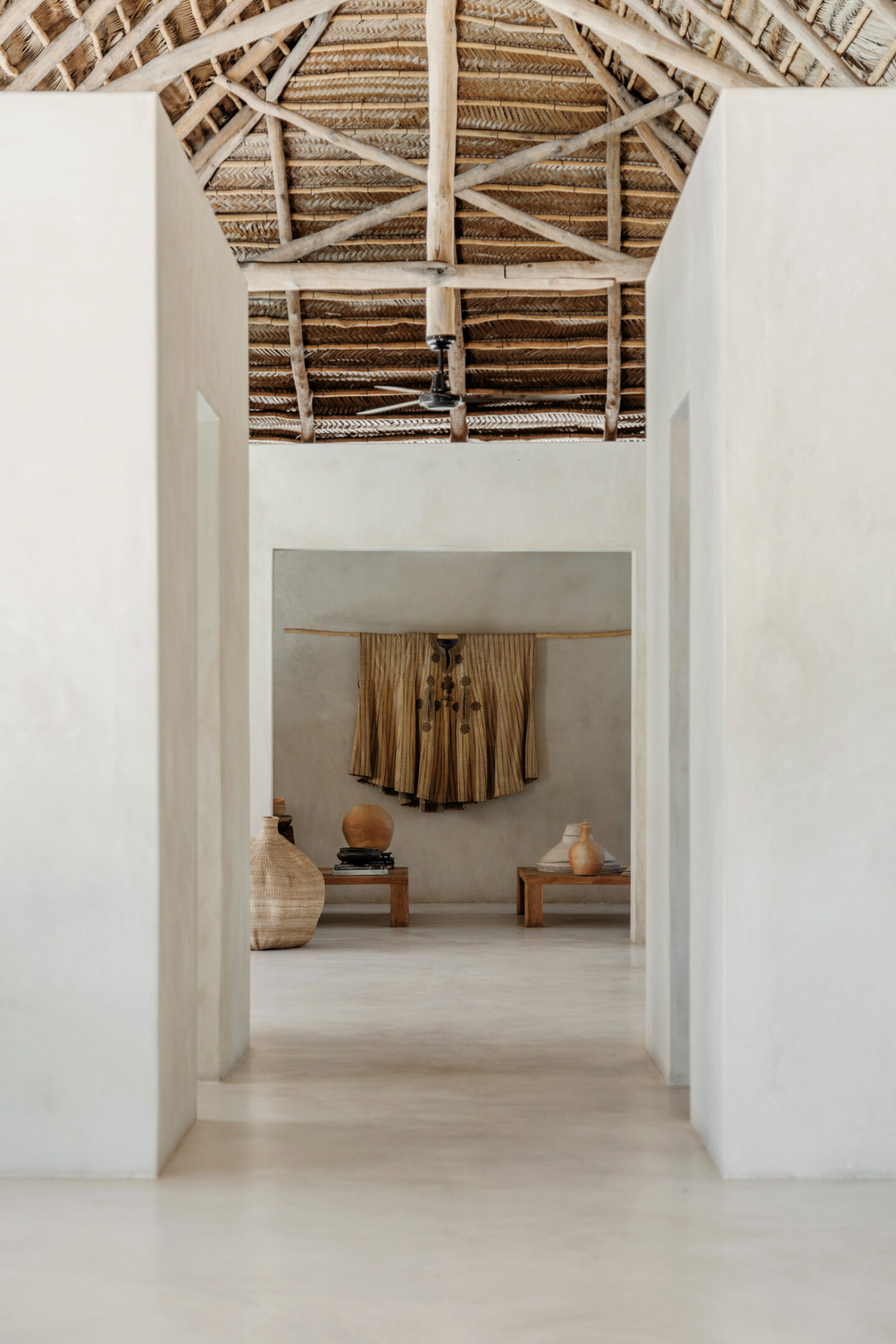
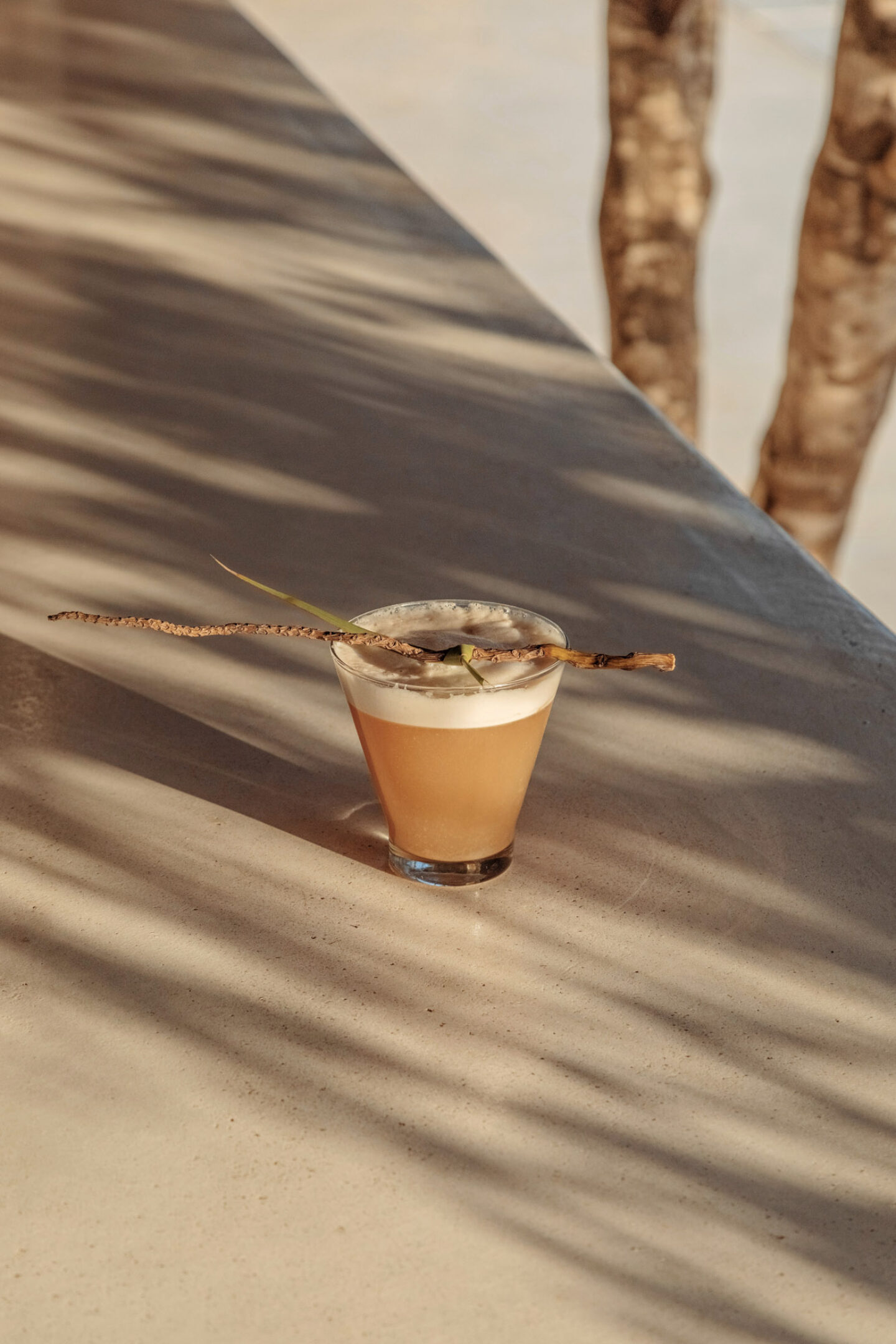
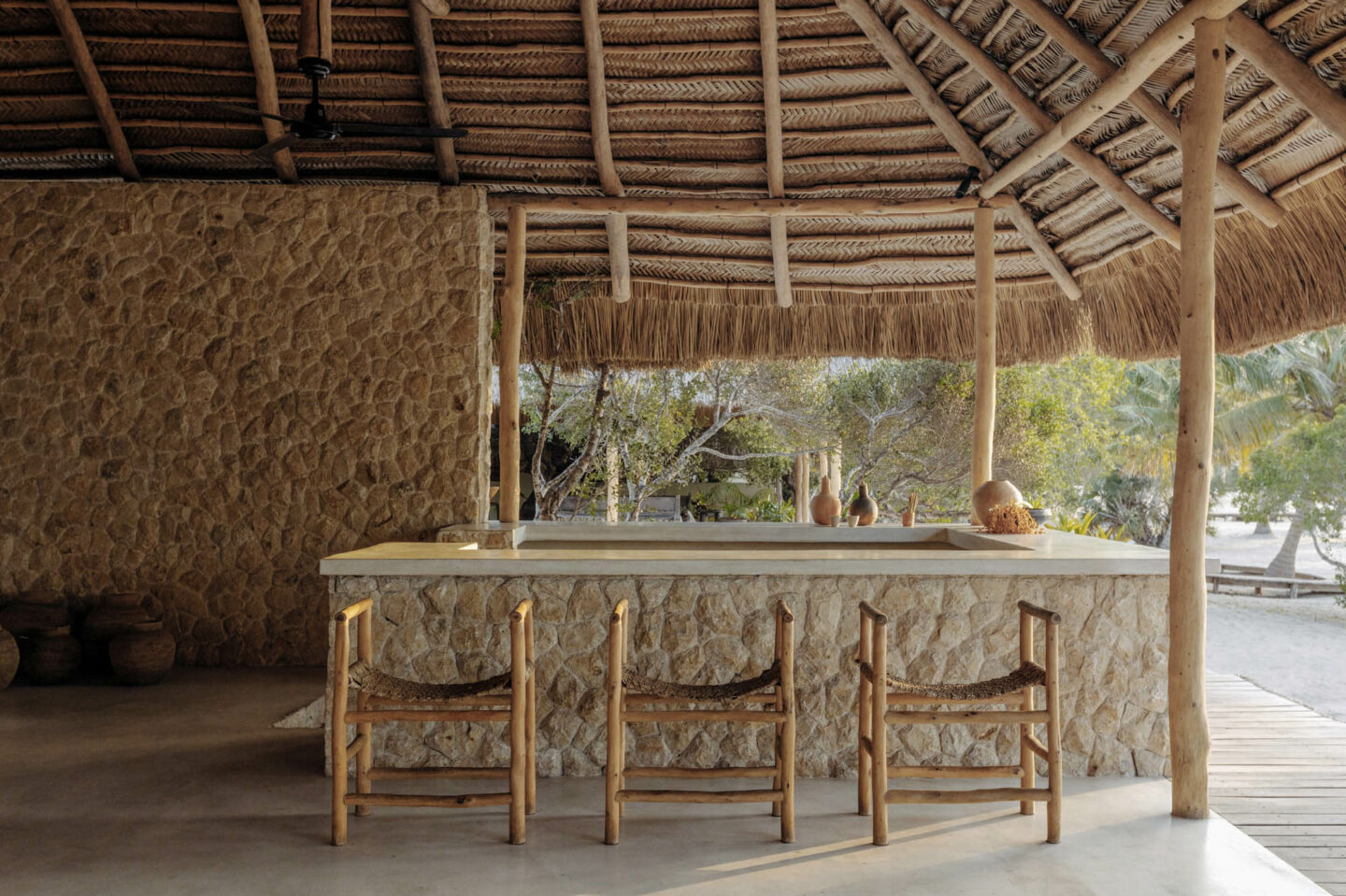
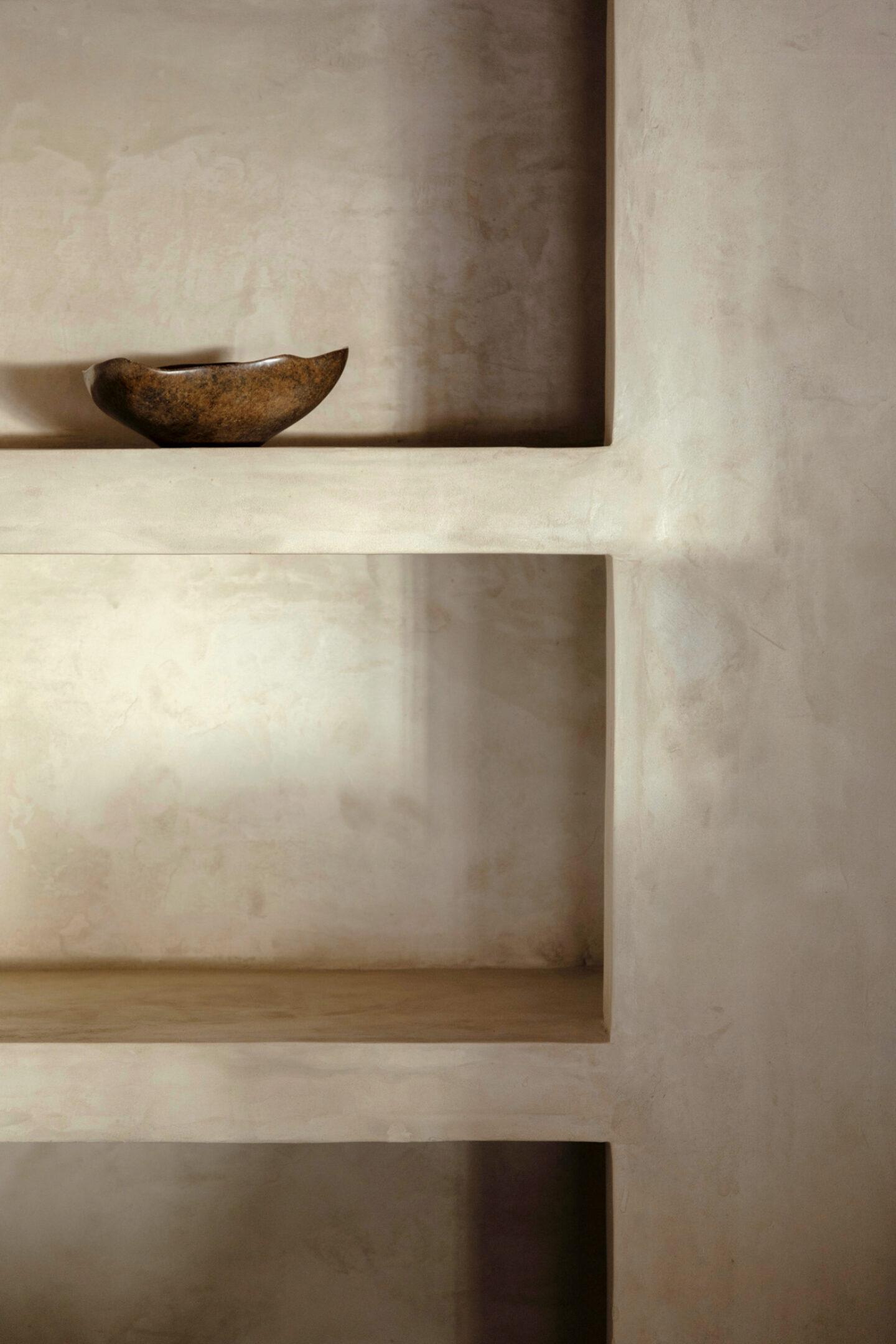
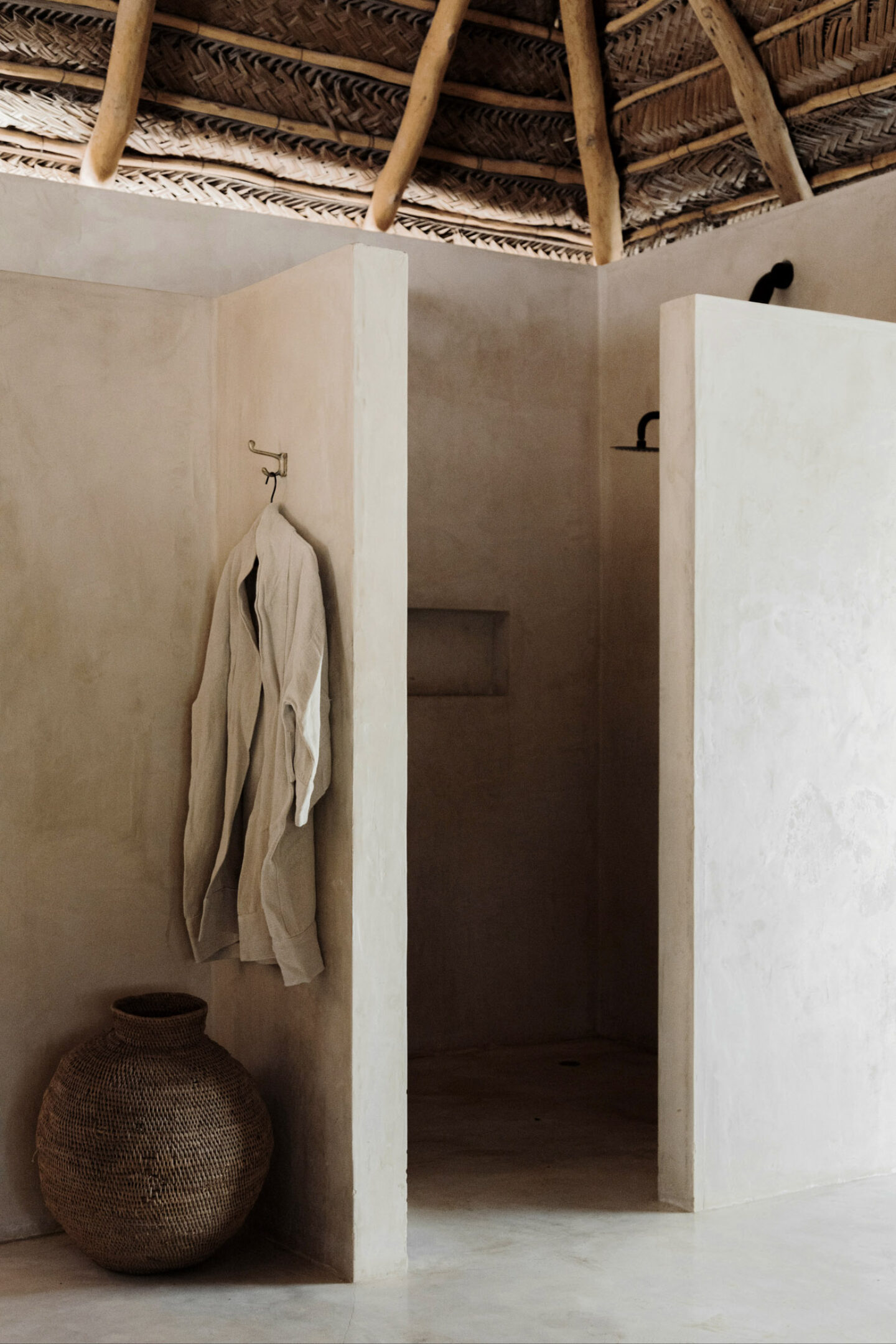
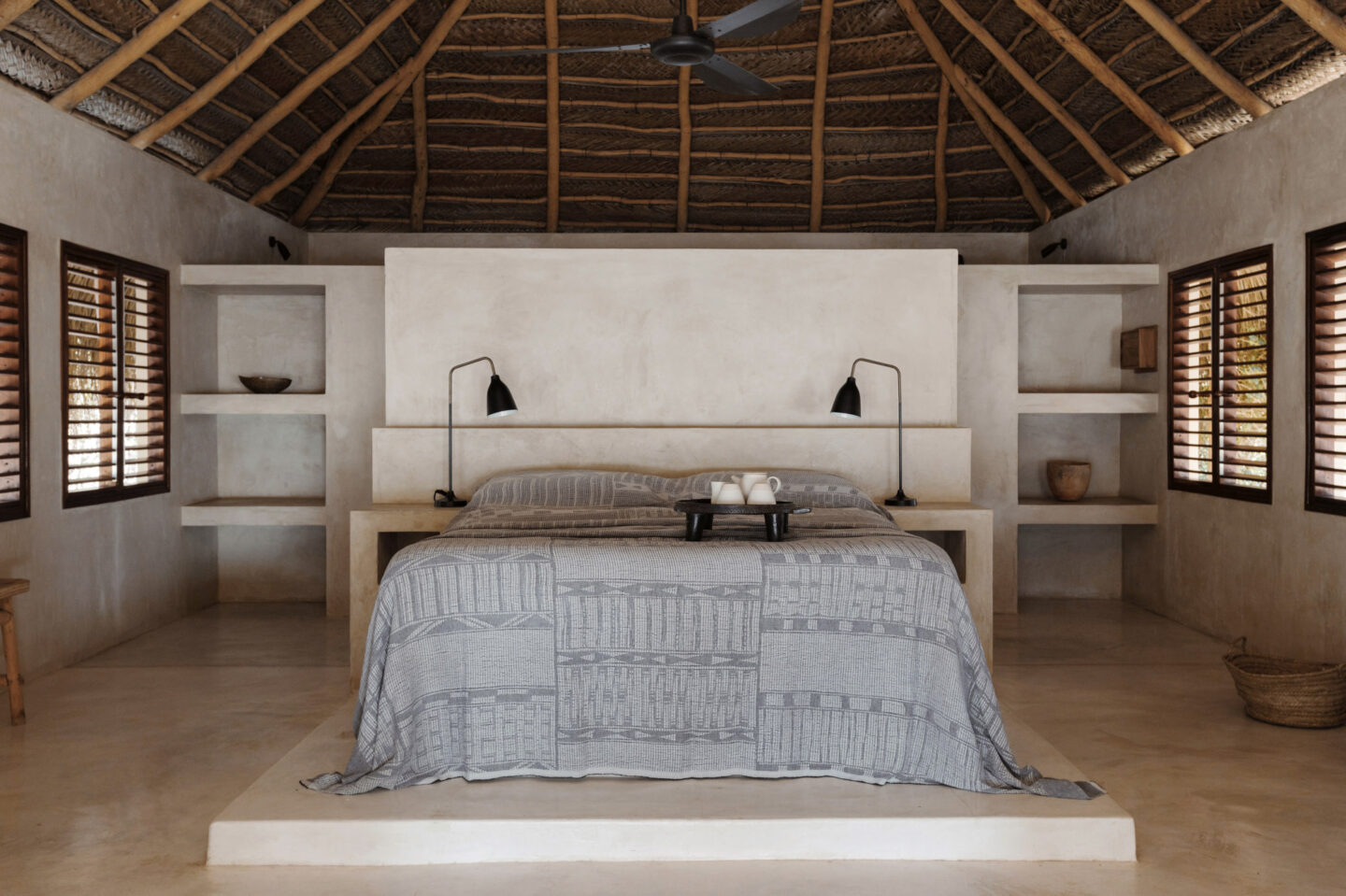
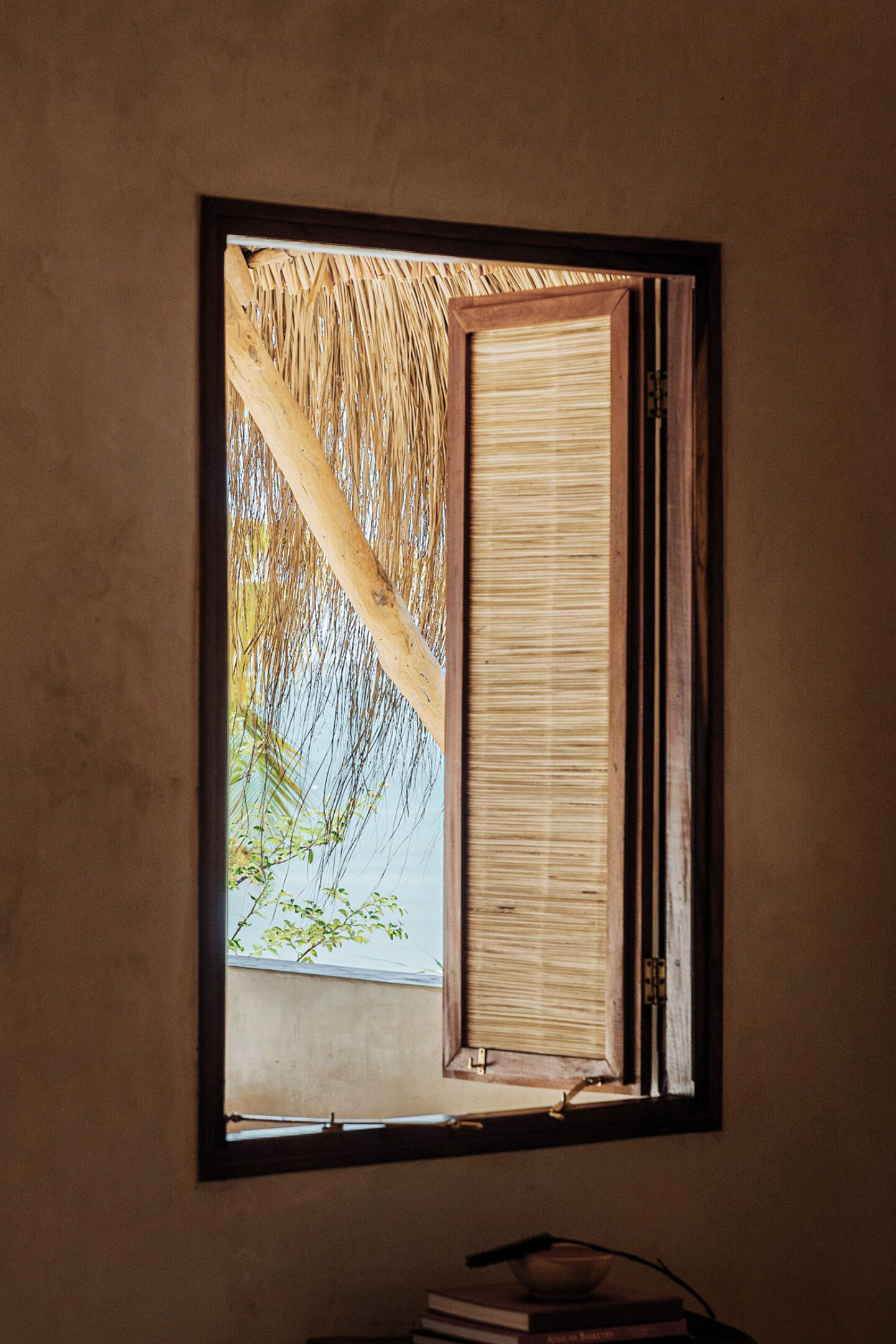
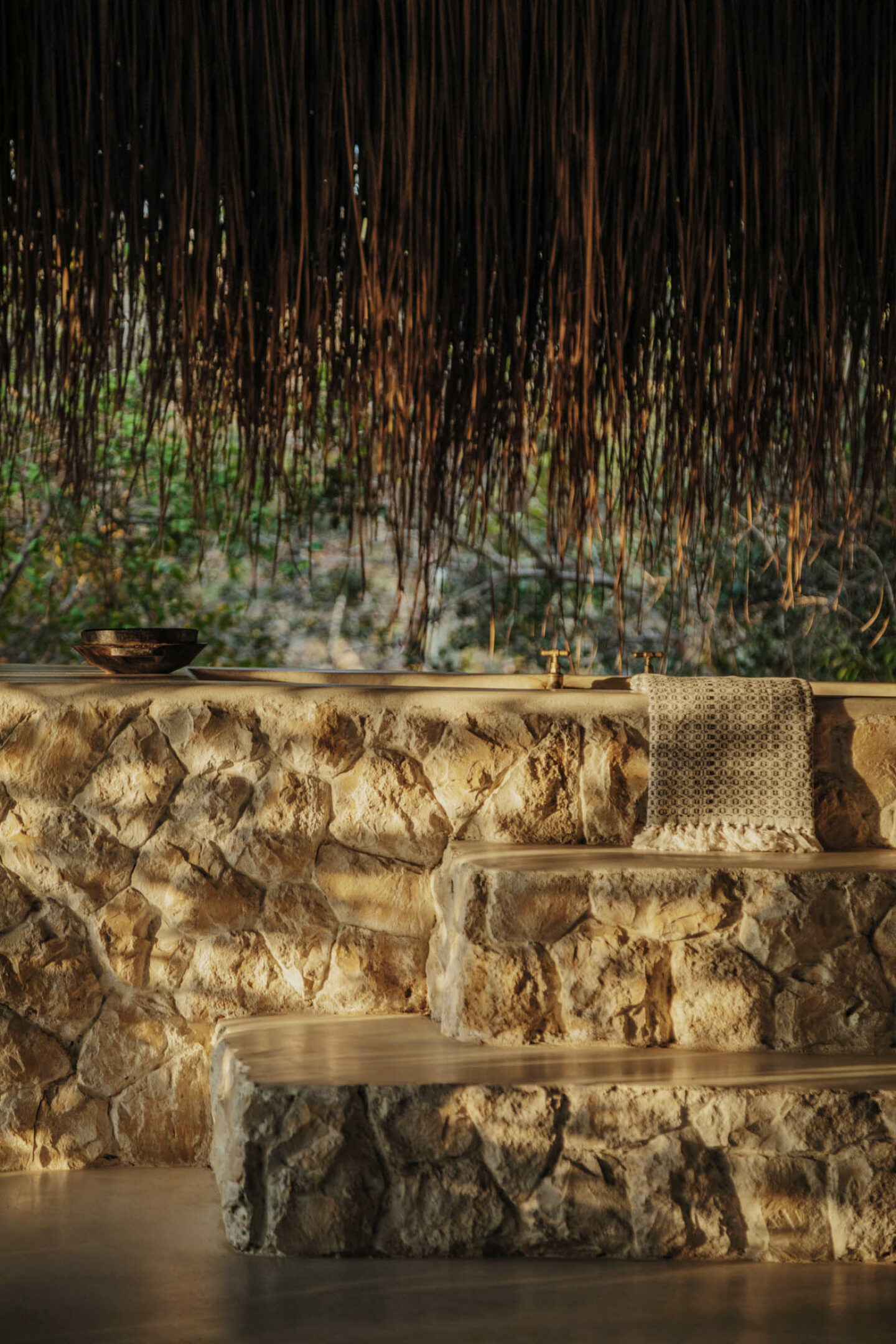
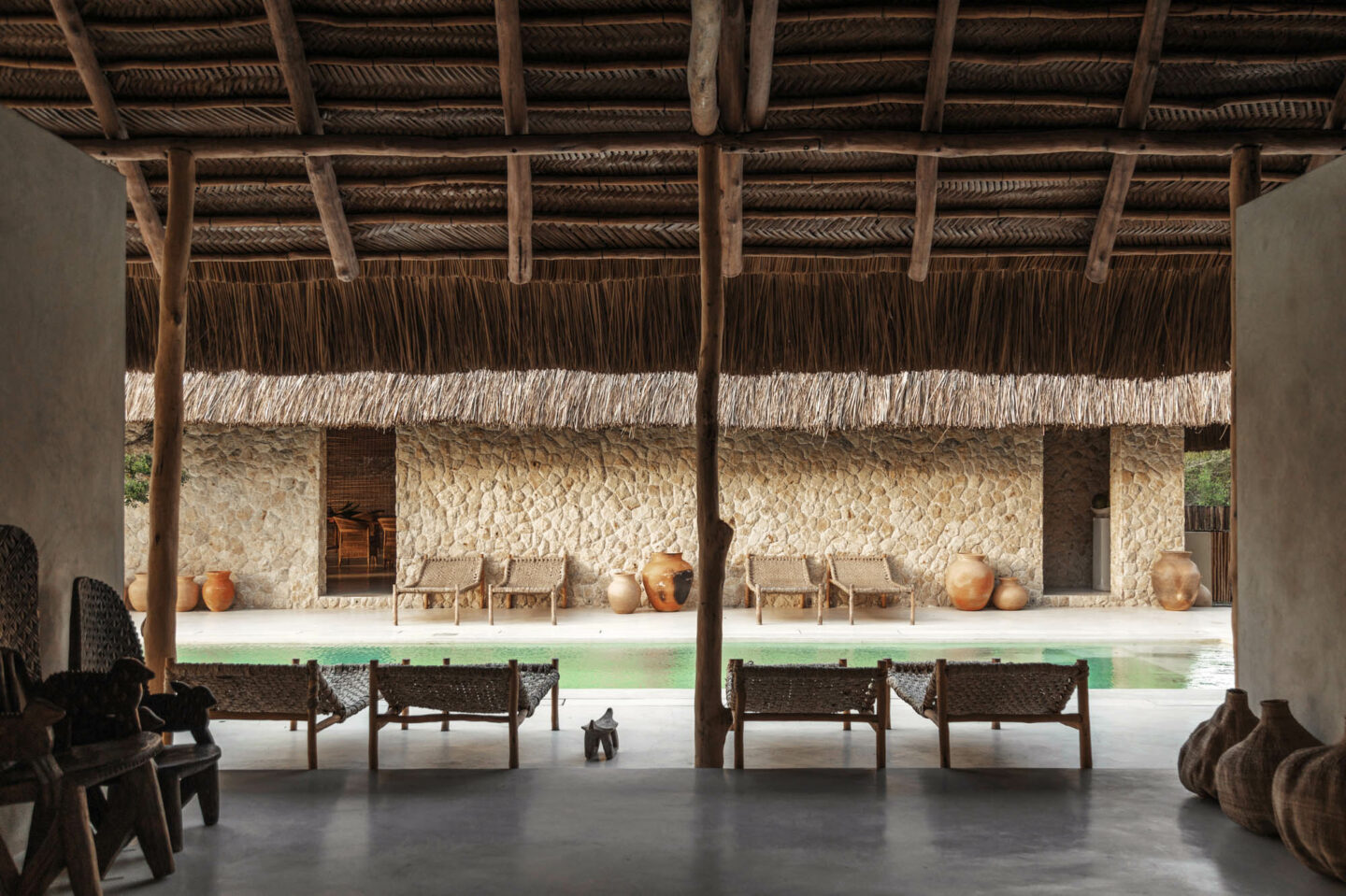
“We started building alongside the community. We depended on the community, and the community depended on us. We got to know everyone.”
Community is central to Sussurro—not only as a place built by locals, but one where guests are warmly welcomed in, and perhaps carry its spirit with them when they leave. Can you share an insight into your connection to the local community here?
We started building alongside the community. We depended on the community, and the community depended on us. It wasn’t like we arrived with a massive team and equipment. We got to know everyone. I started logging the different types of weaving and the natural materials in the area. We’ve had a fantastic master builder, Shumba Mesaere. He’s actually also Zimbabwean, but has lived in Mozambique for years. He speaks Xitswa, the local dialect, and the team has been led by him. Shumba was originally a master thatcher. I didn’t study architecture, but I designed everything at Sussurro and had it signed off by a local architect. Shumba was the one who taught me how high our walls could stand before reinforcement with plinths and ring beams was required. He taught us everything we know about construction. It took us about five years to complete the building project from start to finish.
We’re eco-inclined, but I knew we would build with some cement. I wanted to maintain a balance between the mineral and vegetable. Without this, the hand-crafted element is often lost. It was important that we had that structure. We used a limewash mixed with local sand, which kind of brought the color to the walls, but no glass or anything imported. We started with six rooms and we’re adding bungalows slowly now. Each room is unique in the way that it’s set out and the kinds of items that it holds from people or groups we’re ethically proud to stand by. For each room, we worked with different artisan groups for different parts, like the shutters, doors and roof canopies woven from palm fronds, which provide a natural ventilation system and coolness to the thatch. We don’t have any air conditioning here. Everything’s fan-run, the residence is powered entirely by renewable energy and around 90% of construction ran on solar power too. We have been pretty hardline when it comes to that.
You exclusively champion African artists, designers and craftspeople, and regularly commission one-off pieces, some which are also for sale in Sussurro’s ‘Library’ gallery. Can you share more about the artists?
Our north star was that we were going to source everything 100% from Africa, beginning as hyper-local as possible and moving outwards if we couldn’t find something in South Africa, Malawi, Tanzania or Zimbabwe. Our fired earth clay pots and vessels are designed and formed by our local Inhambane community. We have an ongoing collaboration with Khetu Khamba, a cooperative of weavers from Linga Linga Island, with whom we create basketware, shoppers and hats. Our kikoys, light East African cotton towels, are all made from unbleached cotton by a Tanzanian cooperative of hand loomers known as Laini. Our chairs are made by the inimitable master Malawian chairmakers from Blantyre, and our hand carved side tables are stools from the Tonga peoples of Binga in Zimbabwe and a group of Mozambican carvers from Maputo province. We have a few other beautiful pieces from North Africa in the gallery.
I worked with Maxwell Sande, a third-generation Shona sculptor in Zimbabwe, on our wash basins across the residence and in our bungalows—each is a one-off. Shona sculpture is amazing. It’s an age-old craft practiced generally by men who have passed down this art in the purest form. It’s generally not the most lucrative career in rural regions, it’s about living for the art, and about connection to place through their local stone. Instead of having soap dispensers, we have rough cut pieces of charcoal soap that are made here and shampoo amenities in ceramic vessels. For our fine ceramic collection, we collaborated with Mutapo, who are a group of amazing artists very close to my heart, led by master ceramicist and our close friend Marjorie Wallace from Harare, who sadly passed away last year.
What we really hope to do with Sussurro is to showcase local everyday hand-made objects. The pequena vasoras (hand brooms) we use across the residence are the most brilliant pieces of everyday domestic life in Mozambique, for example. They’re made of coconut palm fiber and splayed open through the plaiting of ilala palm through their bases. For our makers, there’s a pride in suddenly realizing that guests are coming here from all over the world and they’re in awe of these pieces in which maybe there previously wasn’t so much pride for locals.
It’s definitely made things less cost-effective, and has taken a lot of time to source only from Africa, but there are pieces here now that I’m really proud we’ve designed together with our team—our daybeds, our sun loungers, our bar stools are really special, entirely unique pieces. We use natural materials in key places, knowing that they will wear out over time in the sun and we’ll have to replace them. When that happens, like when the houses need re-thatching, we re-employ a local team. This sustains our continued connection with the community, and our sense of place within it.
What’s so important is not only that there’s a material transfer of culture, but that it continually maintains the connection with the land. When you’re working from the local land, you have to know just when to head out to gather Ilala palm in order to have the best and longest lasting material for weaving. A lot of guys reap the fruit or sap for palm wine—which is absolutely headache inducing!—as weavers we utilize the palho, the very fine fresh palm shoots of this specific plant. Again, there’s a connection to the land and to the plants and the seasons and when the best time to reap is. That connection is where the magic happens.
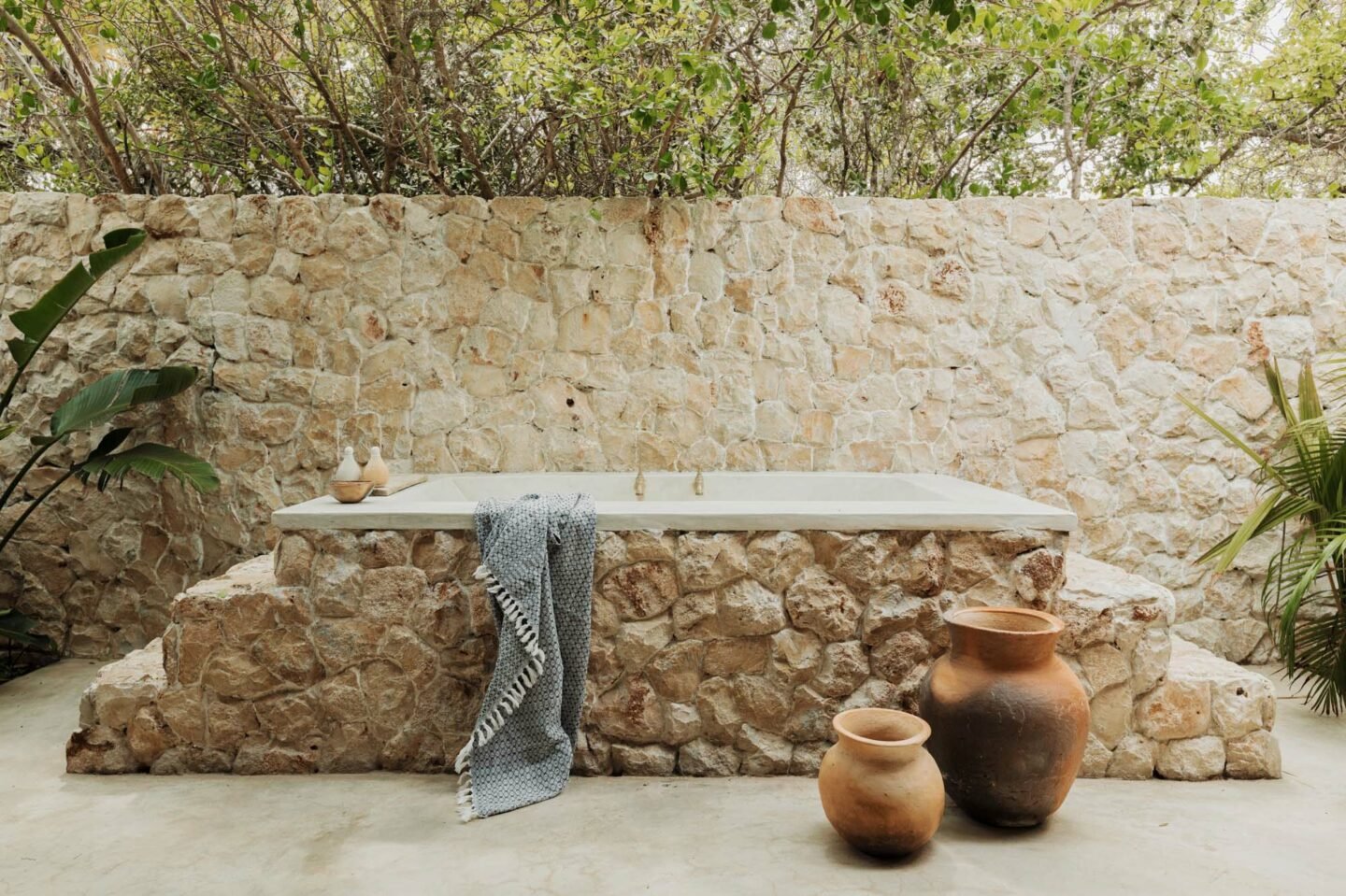
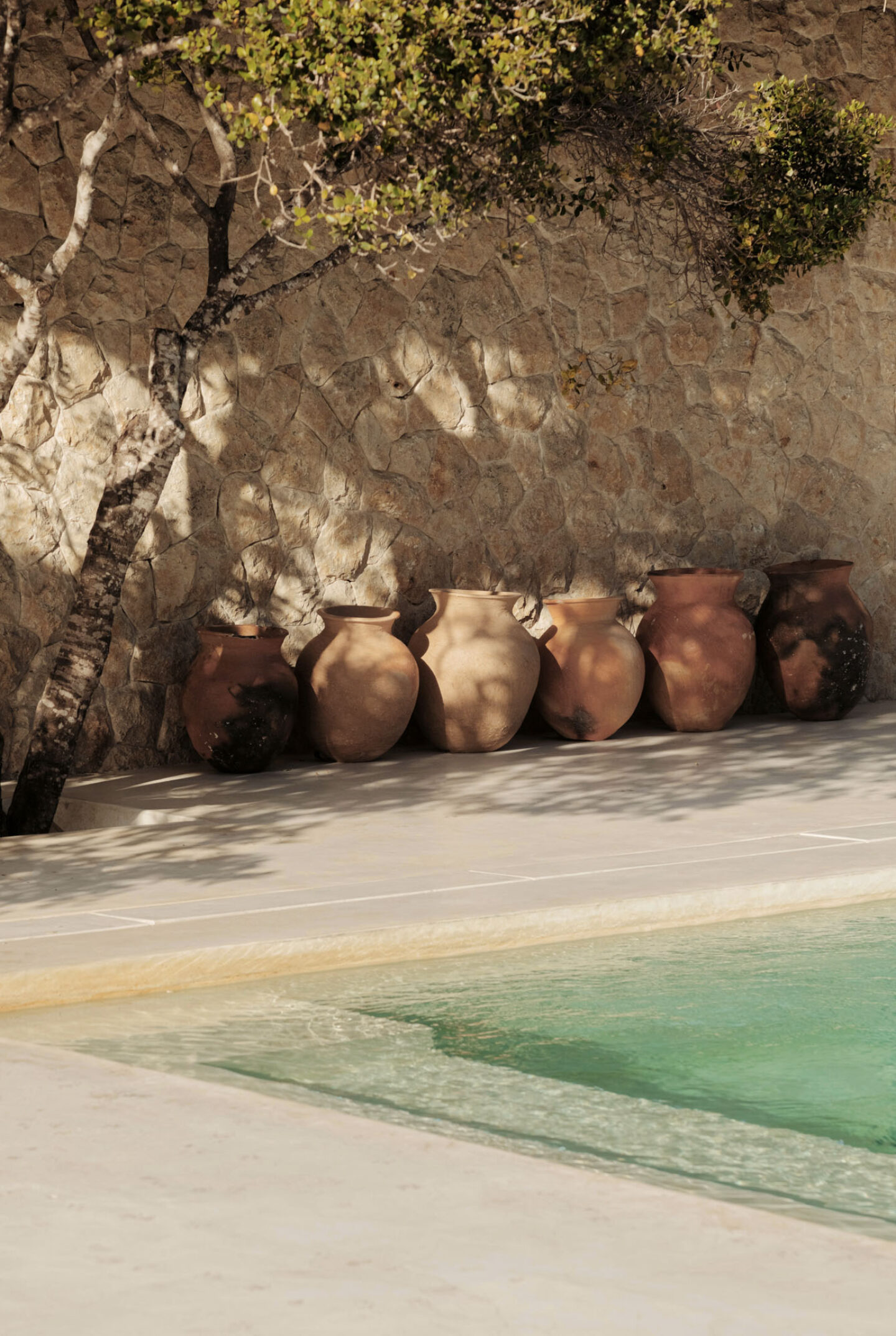
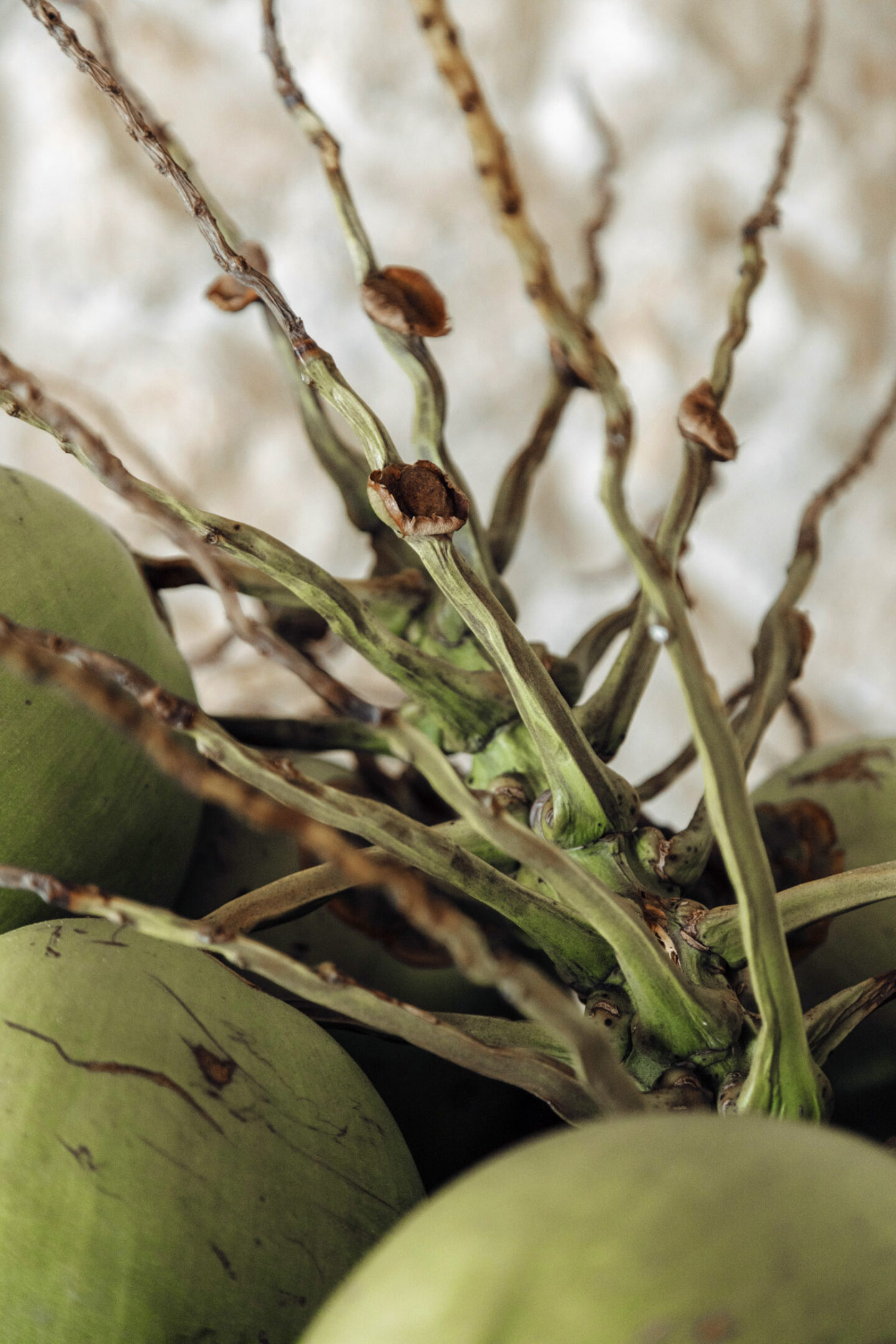
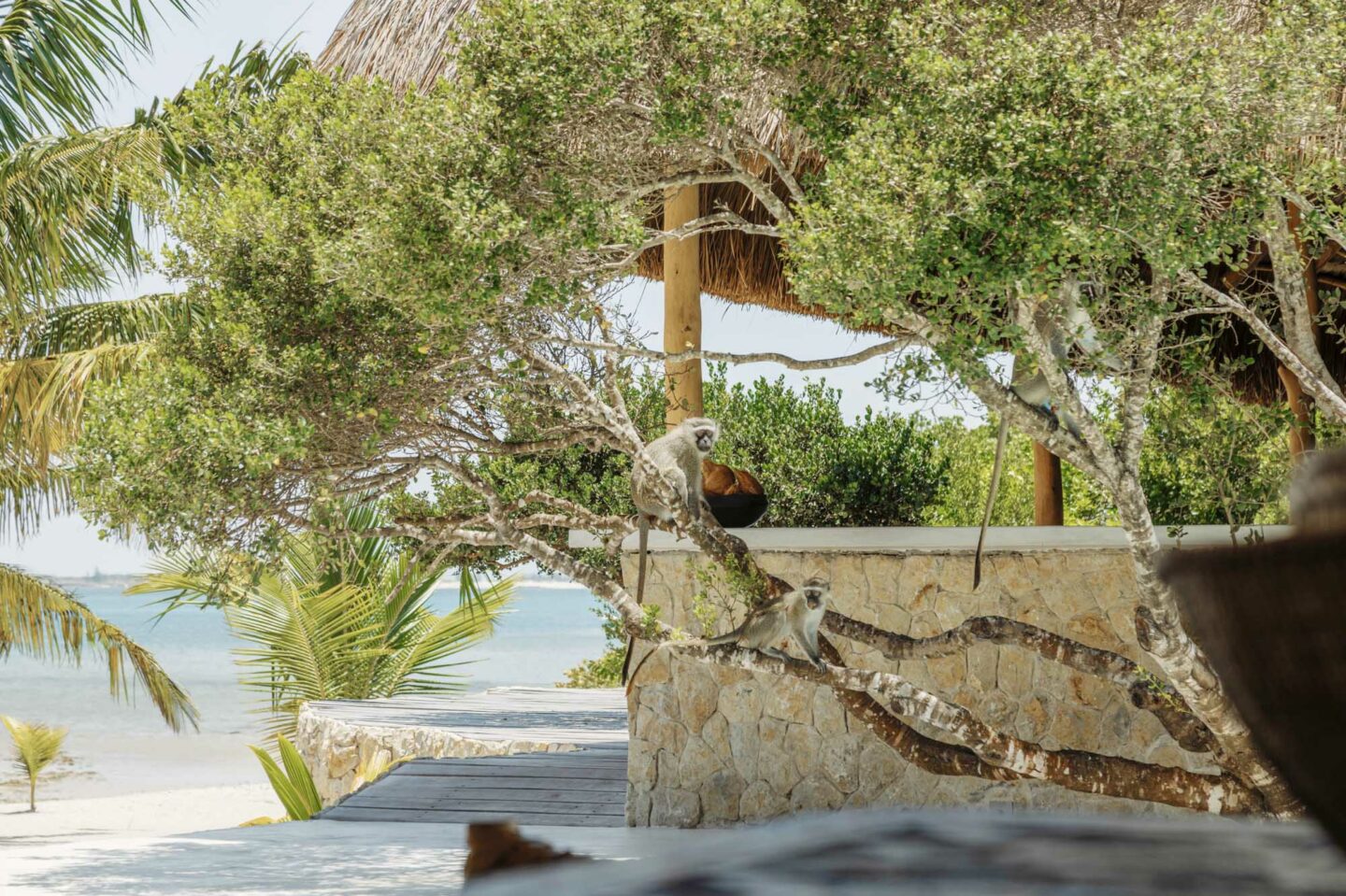
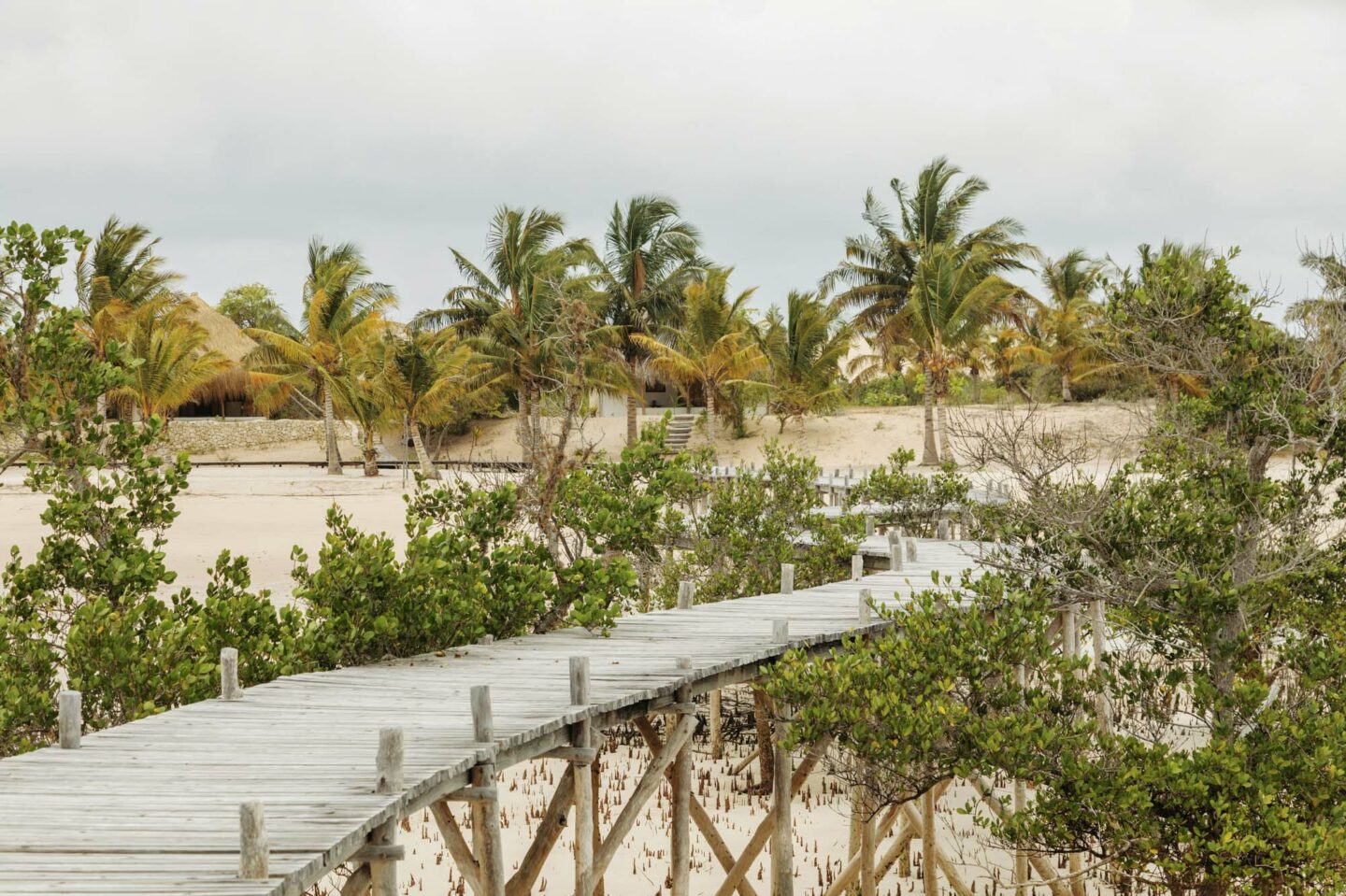
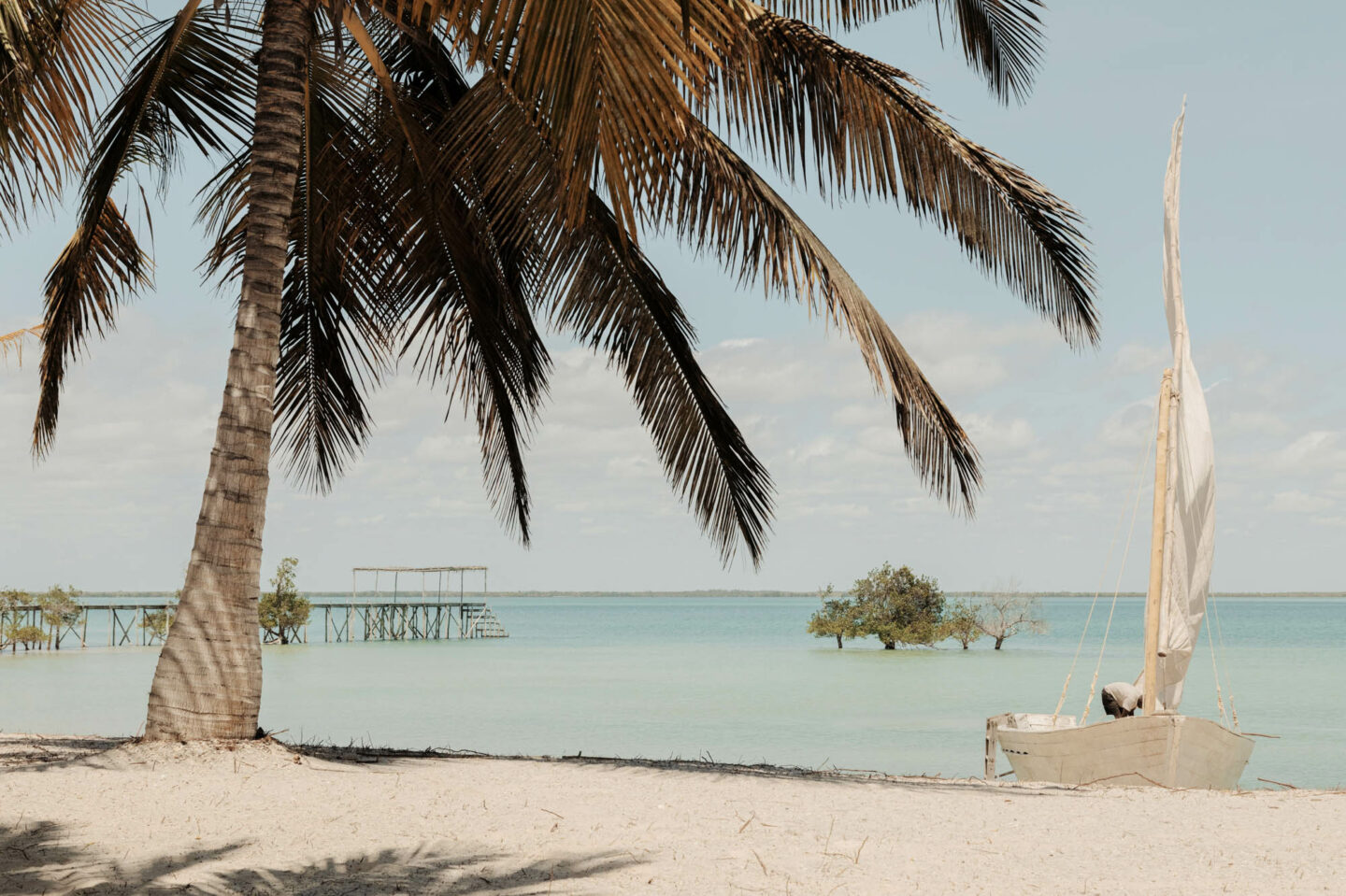
“You can sit in a bath outside your room in total privacy, and daydream over the glistening water as the dhows sail across the bay.”
Can you paint a picture of the experience guests to Sussurro are invited to enjoy while with you?
Well, we came out and lived in the bush for a while, and we’re very chill with being in this environment [laughs]. It was very important to us to bring this experience that we’ve been lucky enough to have, being close to in nature the way we’ve grown up. One of Adam’s and my favorite things to do is to go fly camping in our national parks. You’re so close to animals, so close to the elements. It’s such a clean experience. I knew that we had to provide something where guests felt safe and secure, but I wanted to have this openness about the rooms that allows for a real tangible connection to your surroundings throughout the experience of being here.
When you’re in the bungalows, the roof floats above the structure so there’s no full enclosure. There are birds that can fly in, sometimes monkeys can jump in—they won’t do that when guests are there, but we’ve always got to get the housekeeping team in to clean up the gecko poo, because it’s just part and parcel of being able to be connected to our surroundings. In terms of the apertures, it was important to maintain the sense of being within the indigenous bush. We have low windows along the sides and the shutters are usually fully open, so when you’re lying in bed, you feel amidst the local flora. One of the best things in this climate is bathing indoors and outdoors. That was something that we wanted all of our guests to enjoy because of the beautiful way that the bush protects, you but you are not disconnected from it if you don’t wish to be. You can sit in a bath outside your room in total privacy, and daydream over the glistening water as the dhows sail across the bay.
Images © Edvinas Bruzas | Text: Anna Dorothea Ker
